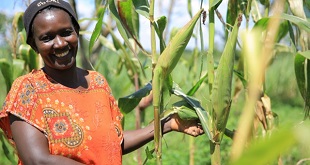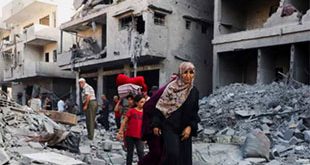
By Molly Lister
Fighting the stereotype, two wazungu experience the lesser-known side of Goma.
It was around 11am on August 5 when a friend and I crossed the border into the eastern Democratic Republic of Congo city of Goma from Rwanda. It was the start of roughly eight hours that we spent there, in which we had, unfortunately, a very stereotypical Congo experience. We were, as I have now started referring to it, completely Congo.
It was not the powerlessness of almost being mugged that has stayed with me since possibly because I was able to catch the guy before he snatched any of my belongings. Nor was it the sudden vulnerability of being taken for questioning and accused of being spies by officers of the Agence Nationale de Renseignements, the DRC national intelligence agency. Rather it was the observation that although it is one city, there are in many respects, two Gomas.

As we walked the 100m across the border we were greeted first by a series of high-end lakeside hotels, the most predominant being the Hotel Ihusi. Known generally as the towns best hotel, it is quite popular with international journalists, NGO workers, UN personnel, Congolese military personnel, prominent businessmen and politicians.
Taking the first turn off the main road after that, we ran into gated compound after gated compound of international aid agencies. The only evidence as to whats going on behind those closed gates, are a series of signs bearing the sea of acronyms: MSF (medicines sans frontiers), IRC (International rescue committee), NRC (Norwegian Refugee Council, AVSI (Association of Volunteers in International Service), to name a few.
The UN and all of its agencies and programs including UNICEF, WHO (World Health Organization), WFP (World Food Program) and UNHCR is everywhere. According to the MONUC Mission website, as of 30, June 2009, there were 18,691 total uniformed personnel, including 16,921 troops, 692 military observers, 1,078 police; 973 international civilian personnel, 2,483 local civilian staff and 619 United Nations Volunteers in the DRC.

Standing in Goma, its hard to imagine that the current force is inadequate to stabilise the country. But even with the largest UN force worldwide, there is only 1 MONUC soldier per 137 km2, an area almost twice the size of my hometown of Manhattan. Still, the idea that the force is inadequate is hard to conceptualise while walking around Goma. The UN presence and the high number of international NGOs, is overwhelming. Everywhere you look there are shiny white vehicles stamped with UN and NGO stickers. And not just jeeps; there are UN ambulances, army trucks, water tanks, caravans, supply trucks.
In keeping with this, almost all the visible construction by the lakefront is for three and even four story mansions, meant, I would have to assume, for the numerous foreign aid workers who have relocated to the city.
That is one side of Goma; South Goma.

A few turns and less than five minutes away by motorcycle taxis called boda, we discover the other Goma.
This Goma, generally known as North Goma feels tucked away behind the tarred roads and airport, hidden from the NGO offices and fancy hotels, impossible to find if you do not know where you are going.Â
We stumbled upon it almost accidentally while taking a boda ride to an old colonial hotel and relic from the late former Congo dictator Mobutu Sese Seko era in Western Goma.  Hard hit by the eruption of Mount Nyiragongo in 2002, the devastation in this area is impossible to ignore.
Yet in the expanse of unevenly dried lava, the Congolese people have begun to rebuild their lives. Recently built small wooden houses stand clustered together, looking precarious atop the layers of uneven lava. People use the lava to create short walls and fences around their property. Small shops, filled with glucose biscuits, soap, and other basic household items line this street. In front of them, women sell farm produce and other items on fabric by the side of the road. Children fill the area; some lug water fetched from the Lake (a good ways away), others carry goods from town or play football on rocky volcanic fields with makeshift goal-posts and balls.

Most of the men work nearby at the more substantial areas of lava, chipping it down to movable pieces; many of which more likely than not, end up as barriers of protection for the numerous lakeside mansions. Some stop to wave as we bodad by; others are more preoccupied by their work and do not even notice. Most look surprised to see mzungus in their area.
It is likely most visitors do not get to this area where the happenings of town, of the international aid agencies and fancy hotels feel like another world. In contrast to the abundance of vehicles in city centre, our bodas are the only form of auto transport on the uneven, volcanic terrain. In place of three-story mansions, basic one-room structures dominate the landscape. Besides some tarps stamped with agency acronyms, there is little trace of the overwhelming NGO presence in the city centre.

Standing in this other Goma, it is easy to see that it is these people whose lives Western media overlooks for the more dramatic clichs of corruption, violence, and abuse. Unfortunately, these same people are the ones who suffer most from the stereotypical Goma I experienced.
 The Independent Uganda: You get the Truth we Pay the Price
The Independent Uganda: You get the Truth we Pay the Price



